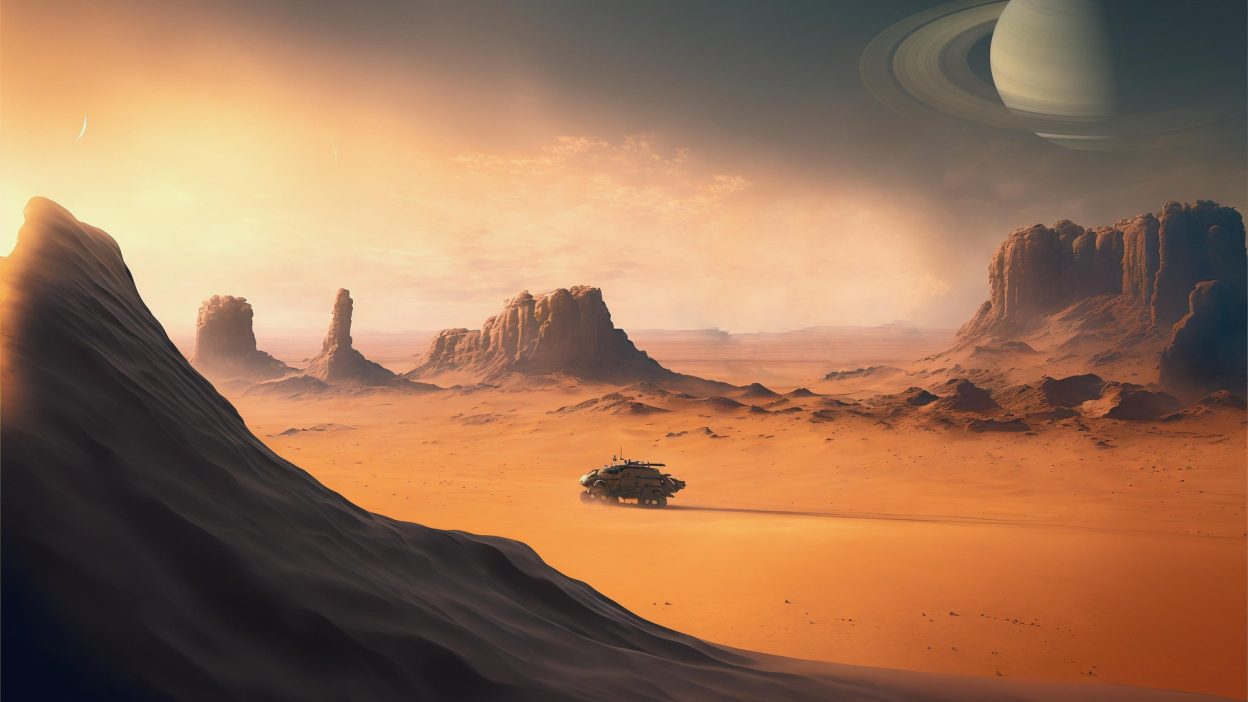Exoplanets, New Planet Discovery, Three Suns Planet, Space Exploration, Alien Life Possibilities
A newly discovered planet, just 22.5 light-years away, orbits one of three suns in its system. Could this rocky, scorching world host alien life, or is it a cosmic wonder with no neighbours?
A New Frontier in Space Exploration
Astronomers have made an exhilarating discovery—a new exoplanet that orbits one of three suns in its star system, located 22.5 light-years from Earth. Named LTT 1445Ab, this rocky planet could be one of the most promising places to look for extraterrestrial life. But what makes this discovery so significant, and could it truly host alien neighbours? Let’s explore this cosmic breakthrough and what it means for the future of space exploration.
The Role of TESS in Finding This Unique Planet
The discovery of LTT 1445Ab was made possible thanks to NASA’s Transiting Exoplanet Survey Satellite (TESS). Since its launch in April 2018, TESS has been on a mission to locate planets outside our Solar System, known as exoplanets, by monitoring the brightness of over 200,000 stars in our galaxy.
TESS identifies exoplanets by detecting subtle dimming in a star’s light, which often indicates a planet passing in front of it. Using this method, scientists have already discovered over 4,000 exoplanets, and TESS alone is expected to identify 10,000 unknown worlds by the end of its mission.
Among these fascinating discoveries is LTT 1445Ab—a planet that not only orbits its star at breakneck speed (completing an orbit in just five days) but also exists in a system with three suns, all of which are red dwarfs.
What Makes LTT 1445Ab So Special?
This planet, affectionately nicknamed “Rocky” by some researchers, stands out for several reasons:
A Trio of Suns:
LTT 1445Ab orbits just one of its three stars, a glowing red dwarf that appears as a fiery red disc in the planet’s sky.
The other two stars are much farther away, appearing smaller and darker, almost like two red eyes watching from the void.
Its Atmosphere:
One of the most thrilling discoveries is the potential presence of an atmosphere on LTT 1445Ab. If confirmed, this raises the possibility of alien life, as atmospheres often play a crucial role in sustaining living organisms.
Although the planet’s surface temperatures reach a blistering 320°F (160°C), it’s not entirely impossible for life to adapt to such extreme conditions.
Its Proximity to Earth:
At just 22.5 light-years away, LTT 1445Ab is relatively close in space terms, making it a prime candidate for further study using Earth-based telescopes and future space probes.
Its Rocky Terrain and Size:
The planet is 8 times more massive than Earth and about 33% larger, with a surface likely made of solid rock. Its compact size and composition make it an exciting world to study, especially when compared to gas giants like Jupiter.
Challenges in Finding Alien Life on LTT 1445Ab
While the potential for extraterrestrial life is tantalising, there are significant hurdles to overcome:
Extreme Temperatures:
The high temperatures on the planet’s surface make it unlikely to support life as we know it. However, some resilient microorganisms on Earth, called extremophiles, thrive in boiling hot environments, leaving the door open for unique life forms on LTT 1445Ab.
Limitations of Current Technology:
Although TESS has provided invaluable data, it cannot confirm whether the planet has an atmosphere. Advanced telescopes and space probes will be needed to study its atmospheric composition in detail.
What Would Earth Be Like With Multiple Suns?
The discovery of LTT 1445Ab raises an intriguing question: what would life on Earth be like if we had multiple suns? Surprisingly, scientists have already explored this concept by studying Kepler-16b, an exoplanet with two suns that resembles the fictional world of Tatooine from Star Wars.
If Earth had two suns:
Eclipses Would Be Common:
The two suns would periodically pass in front of one another, causing regular solar eclipses. During these eclipses, the planet would receive 30-40% less energy, leading to colder days.
Chilly Conditions:
If our suns were less bright than the current Sun, Earth’s surface temperature would likely plummet, turning it into a frozen wasteland.
Breathtaking Skies:
The sunsets on a two-sun Earth would be spectacular, with different colours and patterns gracing the horizon each evening.
A Mysterious Companion to Our Sun?
The idea of multiple suns isn’t purely hypothetical. Some astronomers speculate that our Sun might have a long-lost companion star, nicknamed Nemesis. This hypothetical brown dwarf could explain periodic mass extinctions on Earth by disrupting celestial objects in the outer Solar System and sending them hurtling toward our planet. Although Nemesis remains a theory with no solid evidence, it highlights the dynamic and unpredictable nature of our cosmic neighbourhood.




